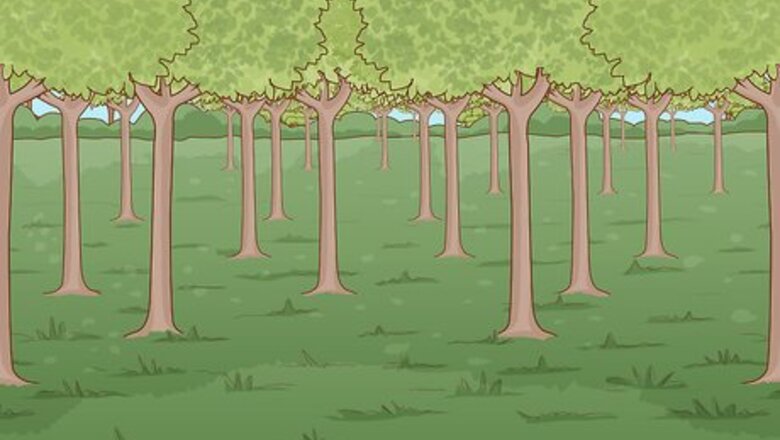
views
Picking the Type of Tree to Grow
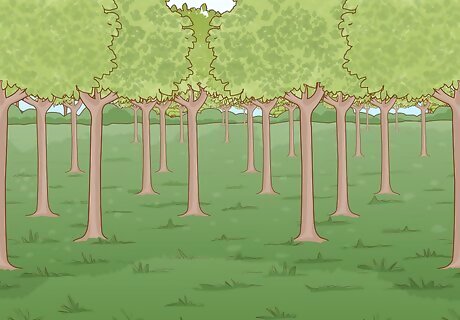
Use your existing woodlands for immediate cash. With 10 acres (40,469 sq m) of forested land, you can become an official tree farmer with the ATFS. Then you can sell off parts of your woodlands in a sustainable way, including replanting trees as needed to keep the harvest coming over the years.
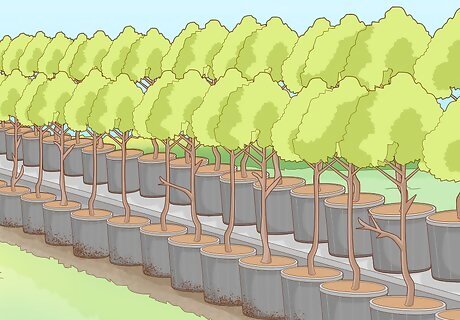
Opt for a nursery if you need cash faster. While tree farms can be profitable, you likely need cash in the interim while your trees are growing. A nursery is a good option because you can start with seeds or seedlings, and in 2-5 years, you can sell the young trees to garden stores or the public. Choose trees that are native to your area and popular. Look around a local garden store to see what they're selling.
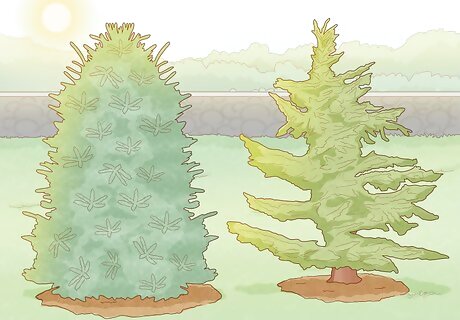
Pick a hardy tree native to your area for a Christmas tree farm. Check with local nurseries to see what grows best in your area, as those trees will do better. Opt for a popular variety for the best chance of being commercially successful. For instance, try Douglas fir, blue spruce, or white spruce. You can also grow more than one variety. Also, look for a variety that states it has "late-breaking buds." That means the buds will break later in the spring. If they break too early, they could be hit by frost, halting growth that year. You can buy plugs or bare root trees. Bare root trees are grown in fields, and the soil is removed before they come to you. Plugs are container-grown, and they arrive with soil. Plugs will last longer before you need to plant them, and you can plant them later in the year if you need to.
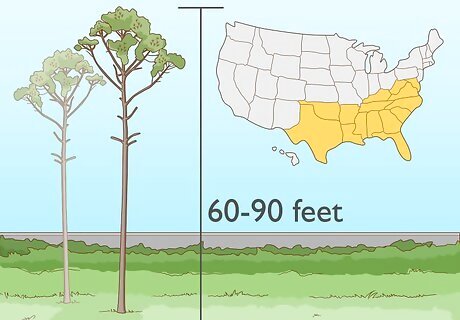
Try loblolly pines in the southern part of the United States for lumber. These are low-maintenance trees which are less expensive to plant than some other types of trees. They grow relatively quickly, and you can sell them for lumber once they reach maturity. This tree is native to 15 southeastern states in the U.S., meaning it grows well without much effort. It grows at a rate of 2 feet (0.61 m) per year and usually reaches heights of 60 to 90 feet (18 to 27 m), though it can get as tall as 110 feet (34 m).
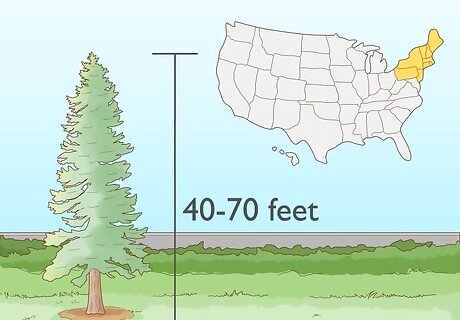
Grow Douglas fir trees in the northern part of the U.S. for lumber. These are native to the area, so they do well. Though you can grow these for Christmas trees, they also do well as a lumber crop; you'd have to be willing to wait 30-50 years for them to mature, though. These trees grow at a rate of 1 to 2 feet (0.30 to 0.61 m) a year, and they usually reach 40 to 70 feet (12 to 21 m).
Planting and Caring for Your Trees
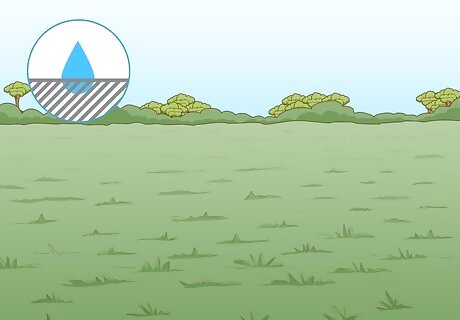
Choose a flat, well-draining piece of land. The area can slope a little, but you will need to mow between the trees and walk between them to provide care. If it's sloped too much, that will be difficult. Always check what type of conditions your particular tree likes to grow in. For instance, Christmas trees don't do well in wet conditions, so pick an area where water doesn't pool. A good option is an area that was used to grow crops.
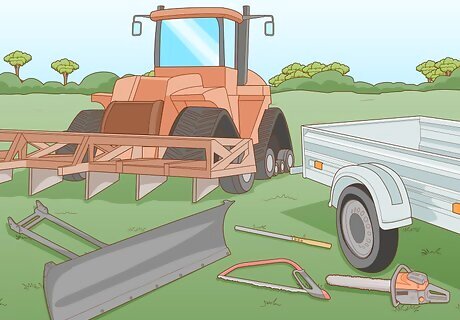
Purchase the appropriate equipment. You will need to buy or rent a tractor, an auger, a plow, a trailer, a shearing knife, and a chainsaw. You'll also need netters and bow saws for a Christmas tree farm. The auger helps with planting, while the shearing knife and chainsaw are good for pruning, shearing, and cutting trees down for the customers. However, if you're working a small farm, you can rent tools or use hand-operated ones. The tractor allows you to pull a plow and till the soil. The netters bundle Christmas tree's limbs up next to the trunk with netting so customers can take it home, while the bow saws are for those customers who want to cut the tree down themselves.
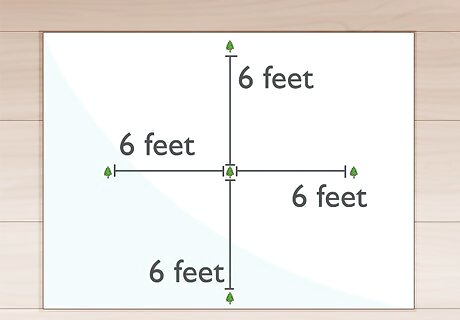
Decide the layout for planting your trees, leaving 6 feet (1.8 m) of space between. Before planting, plan ahead for the best layout. Christmas trees can take 5-10 years to grow, so if you don't plan, and if you're growing for lumber, it can take 30-50 years. It's hard to fix your mistakes later. Aiming for 6 feet (1.8 m) of space around each tree on all sides for Christmas trees will allow space for 1,200 trees in 1 acre (4,067 sq m). By the time the trees are full grown, they will be nearly touching at this spacing. For other types of trees, check the canopy spacing to determine how far you need to plant them apart. Include access roads every couple of rows. Spacing trees out is important, as you will need to get between them to care for the trees and give them extra air circulation.
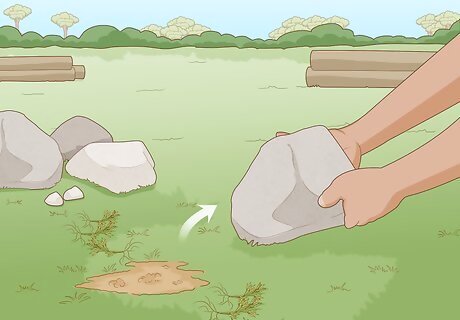
Clear the area in the fall ahead of planting. Remove obstacles like rocks or logs, and pull up or cut down other plants in the area, such as trees and shrubs. To get rid of weeds and grasses, use a herbicide the summer or fall before you want to plant. Spray the herbicide over the area to control the weed population. Evergreens like firs and pines actually have difficulty competing with weeds, particularly when they're young.
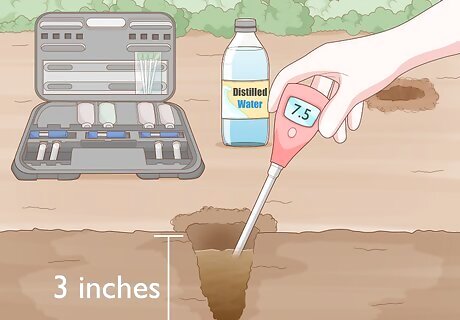
Test the soil pH to see if it's appropriate for your preferred tree. You can order a soil pH kit from your local farm extension, your local nursery, or online. To test the soil, dig a small hole that's about 3 inches (7.6 cm) deep. Add distilled water until it makes a filled, muddy pool. Insert the probe that came with the kit to test the water. It will give you a reading between 0 and 14. It's important to use distilled water because the pH is neutral. Check more than one spot in your field, as pH can vary widely. Numbers below 7 mean your soil is acidic. "7" is neutral, and numbers above it mean your soil is alkaline. Check the specifications for your particular tree to see what pH level it likes.
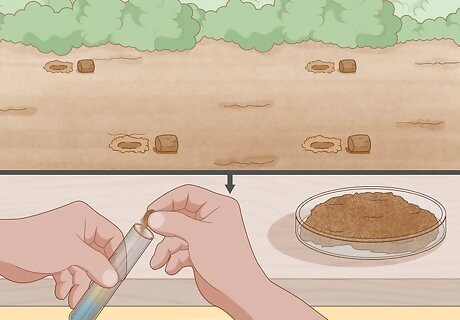
Conduct a soil analysis if you want to check nutrient levels. A soil analysis kit will also include a pH test, so if you want to know the nutrient content, there's no need to do the pH test and this test. With this test, dig a hole with a spade, then slice out one edge of it with the shovel. Aim for a 1 by 1 inch (2.5 by 2.5 cm) sample. Lift it into a clean container, and then take 5-10 more samples in the same area. Mix them all together, and then take out 2 cups of soil for your sample. You'll send this sample back in using the kit. Order this test from your local farm extension. Clear the plants from the top before you dig. If you can see obvious differences in the soil, repeat this for each type of soil you see.

Amend your soil with nutrients and ingredients to change the pH as needed. Once you receive the results of the soil analysis, it will tell you how much of what materials you need to add to your soil. To comply, you'll spread the material out over your soil and till it into to the depth specified on your analysis. Typically, you'll add a specified type of fertilizer to increase nutrients. To change the pH levels, you add dolomite or quick lime to make it less acidic or organic matter like pine needles or peat moss to make it less alkaline. The soil doesn't need to be tilled unless you're amending the area. Otherwise, you can just dig holes and plant the trees in the dead grass and weeds, as long as you sprayed for weeds in rows to kill them off.
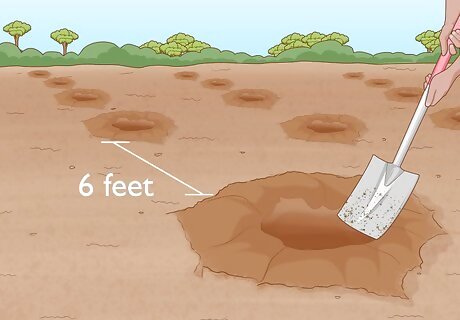
Make holes for the trees 6 feet (1.8 m) apart on all sides. If your ambitious, you can dig the holes for trees by hand; otherwise, you can use an auger attachment for your tractor. Dig a hole wide enough for the plug or bare root using a shovel, a manual auger, or an auger attachment. Don't go too far down, as the root system should start just under the surface of the soil. You can find augers you work by hand or ones that you add to the front of your tractor.
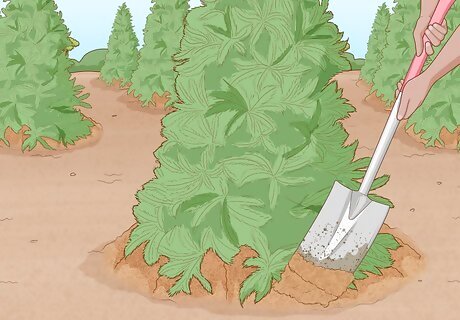
Plant the trees in the holes. Settle the tree plug or bare root into the hole, making sure the roots go straight down into the hole. Fill in the area around the roots with soil, and use a shovel to pack it down gently. Keep in mind that you'll want to plant in groups by year. That is, you want to stagger your trees so that you don't have them all ready to harvest at once. You might plant 300 trees the first year, 300 the second year, and so on.
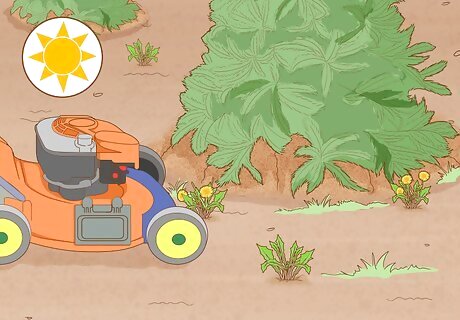
Mow and treat for weeds through the summer. While you don't have to keep the area between the trees as clipped as a lawn, you do want to control it. You should mow at least 3 times a year. In addition, spray for weeds early in the fall and spring, going around each tree or down the row. Keeping the weeds down helps the trees thrive. If you don't want to use chemicals, you can remove them manually with a weed eater. Make sure the top of the weeds always stays below the bottom branches of the trees.
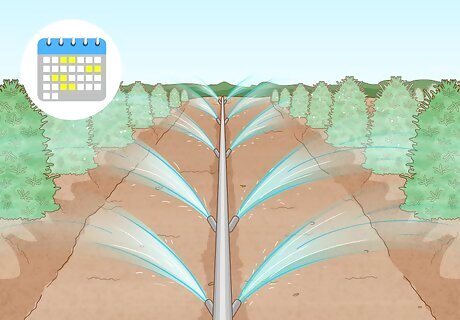
Install an irrigation system, particularly in dry areas. A drip irrigation system will help you water your young trees, which will increase your success rate. Lay out main lines between the rows of your trees, and then punch holes in the main line so you can run tubing to each tree. Attach the lines to a water system to water the trees. You may need to water the trees 1-2 times a week in dry areas.
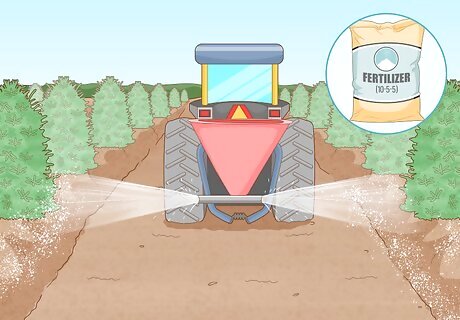
Fertilize spruce and firs twice a year. Pines generally do fine without fertilizer, but other types of evergreens and deciduous trees need more nutrients. Pick either a complete, well-balanced fertilizer or one heavy on nitrogen, based on your soil analysis. A complete fertilizer is one where the NPK numbers (nitrogen-phosphorus-potassium) are balanced, such as 5-5-5. For a fertilizer with more nitrogen, look for that number to be larger, such as 10-5-5.
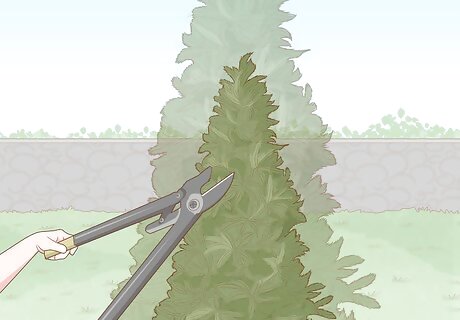
Shear Christmas trees in their third or fourth year. To shear a tree, look for the new shoots each year, which will be greener than the surrounding limbs. Cut them back to 2/3 or 1/2 their growth size, using a shearing knife, clippers, or pruning shears. Shearing trees like this encourages dense growth closer to the tree, creating fuller, more beautiful Christmas trees. Shearing can take weeks or months to complete, as you need to do it for each tree. Make sure to shear pines in the spring when the shoots are pushing out. You can cut other types of trees through the summer and fall. Never cut pine tree limbs back to old growth, as they won't produce buds from this area. However, spruces and firs will produce buds from older growth. With other trees, prune them to encourage good growth and ample growing space and to remove dead or diseased limbs.
Getting Your Business Going

Get funding for your farm. Make a business plan to determine how much you'll need to start your farm. Consider land costs, seedlings, tools and equipment, and labor costs for your business plan. Then, you can present the plan to investors or to a bank to get a small business loan. If you're not sure how to do this, work with a lawyer or an accountant to help you with the process.
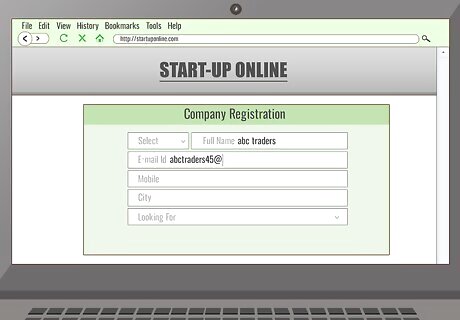
Choose a business name to register your business under and get a license. Check with your city or county to register your business. You may need to register it with the state, too, depending on where you live. It's usually a simple form to fill out. You may need to change your name if another business is already registered by that name. This doesn't have to be your public business name, so don't worry about it being perfect right now. You can do business under another name as long as you fill out the appropriate form later.
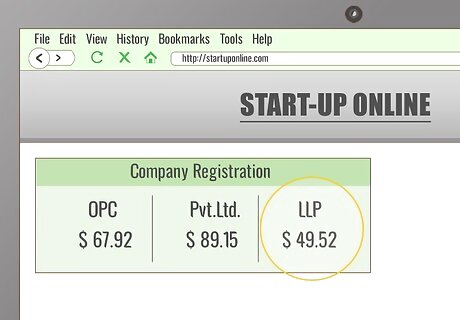
Form a corporation for your business. Typically, an LLC is a good option if you're a small farm, but check the options in your state. An LLC protects you from being personally liable for your business. If you're not sure where to begin, get a lawyer to help you. If you don't plan to hire employees, you can also operate as a sole proprietorship, meaning you are the sole owner and worker.
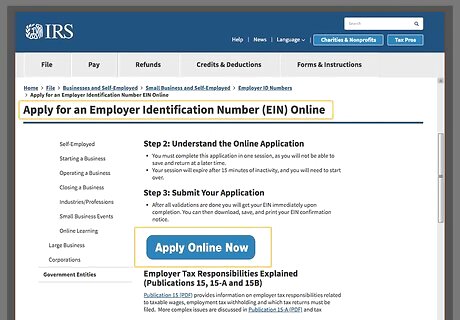
Register for an Employer Identification Number (EIN). This number identifies you to the federal government in the U.S. You don't technically need one unless you have employees, but it can be beneficial to get one anyway, as you can use it in place of your Social Security Number when doing business. You can register for one at https://www.irs.gov/businesses/small-businesses-self-employed/apply-for-an-employer-identification-number-ein-online.
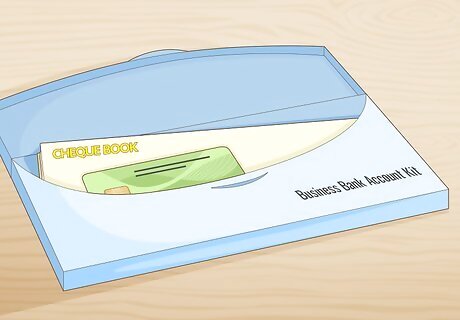
Set up a business bank account and keep track of your expenses. If you try to do it under your personal banking account, it can get confusing remembering what's business and what's personal. Also, set up a spreadsheet or use accounting software to keep track of your expenses and revenue so taxes are easy when they come around. Hold on to your receipts. You may want to hire an accountant for tax season.
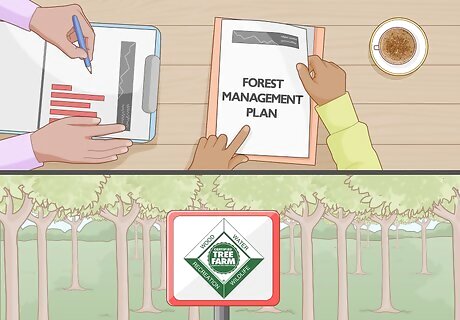
Have a forest management plan set up by a professional. While this step isn't absolutely necessary, it will help you maintain a healthy farm over the years. Plus, part of the criteria for becoming a tree farmer with the ATFS is maintaining healthy woodlands. That means taking care of the soil quality, species, invasive pests, diseases, air quality, and water quality, all of which requires a management plan. You submit this plan to the ATFS for certification. A professional forester can help you develop this plan. You can also create a plan through the website www.mylandplan.org. This website helps you build a plan for maintaining your land properly. To get started, you'll need to create an account. On the next page, include information on your land, such as how many acres you own and what things you want to do with your land. For instance, you may want to make the land healthier or more profitable.
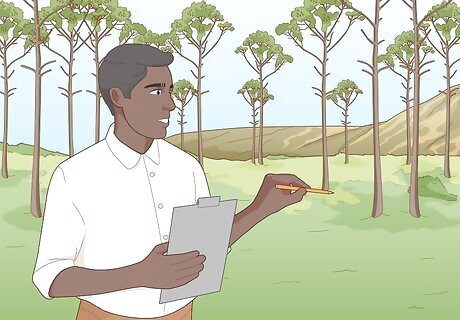
Request an inspector from the ATFS to visit and certify your land. This certification is good to have, as people are interested in buying from sustainable growth farms. The inspector will come and visit your land to see if your management plan handles the issues with maintaining your forests. They will also ensure you meet the standards laid out in the Standards of Sustainability. The inspector will approve or deny your request. If they approve it, you can post a sign showing you are a certified American Tree Farmer. Otherwise, you can try to make changes based on what the inspector said to get certification in the future. As a member of this organization, you agree to protect your woods against disease, pests, fire, and overgrazing. You also promise to reforest the land when you harvest trees, as well as protect the beauty of the forest and preserve special sites. To understand all the requirements, read the Standards of Sustainability at https://www.treefarmsystem.org/stuff/contentmgr/files/2/419d6002f47f967bf2951ec125010fb0/misc/intro_to_the_standards_of_sustainability_for_landowners_dec_2015.pdf. In addition, you promise to work with loggers who are licensed and insured.
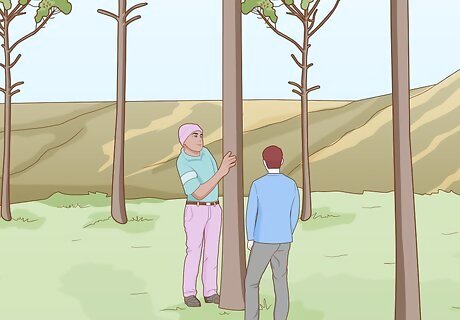
Market and sell your trees. If you're only just beginning, this part of the tree farming is way down the line. Eventually, though, you'll want to either sell your trees wholesale to a retailer (easier but you get paid less) or have people come and pick trees to buy. Either way is viable; it's just up to you which you prefer. If you invite people to your farm, you will need to advertise well in advance of the holiday season on places like social media, the radio, and television, if possible. You'll need signs out at your farm and extra people on hand to assist customers.
Selling Timber
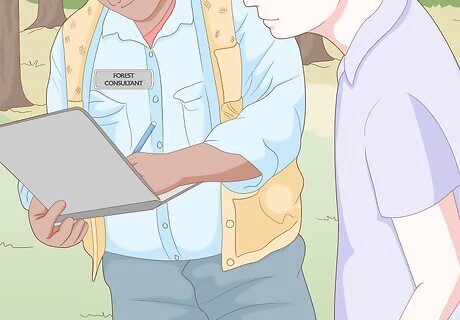
Hire a forester consultant to help you sell your timber. They can help you determine how much your trees are worth, how many you can and should sell, and who you should contact to sell them. In fact, they will give you an inventory of your trees so you know the value of your woodlands.
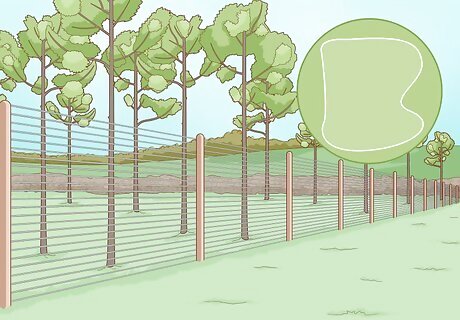
Mark the boundaries of your land and set limits for your loggers. You need to physically mark the corners of your land so that your loggers know exactly where to stop. Your forester can likely help you with this. You also need to decide how much leeway to give loggers, such as if you want them to follow specific guidelines, including following existing roads or making new ones. You should also decide how much to cut and what areas you don't want to cut at all, if any. When making these decisions, consider the promise you made to sustainability. Cutting some trees can actually improve the health of your forest, but if you cut too many, you can damage it. That's why it's important to make these decisions with someone knowledgeable.
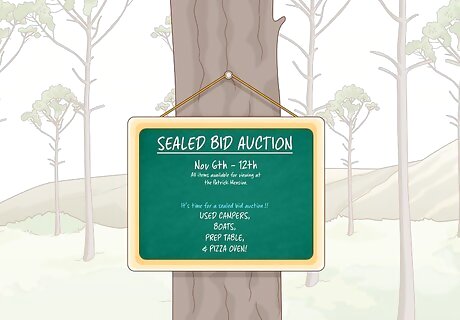
Have your forester create an advertisement for buyers. Once you've set your limits, your forester can make an advertisement, called a timber sale notice. The advertisement will have your contact information so people can call and make bids. Don't take the first bid you get. Wait to see how much you can get from competing offers. Your forester can help you sort through bids. You can also choose a "sealed bid" method, where you take all the bids in closed envelopes through the mail. Then, you open all the bids on the same day. This allows you to compare bids more easily, as your buyers won't be waiting around for a response.

Decide on a buyer and make a contract. Once you accept a bid, have them sign a written, formal contract that details exactly what you want to be done. Include the specific boundaries, what areas you want to be left alone, and how many trees you are agreeing to cut. Your forester can help you with the contract. It should also include information on what happens if the loggers damage other trees in the forest while harvesting the trees you agreed upon.

Lay out the boundaries again on harvesting day. When the loggers show up, meet with them to show them the boundaries again. Also, point out the areas you don't want to be cut. In addition, check up on the process as it progresses. You can also have your forester do this if you are new to the process. After the trees are harvested, work with your forester to replant the area as needed.














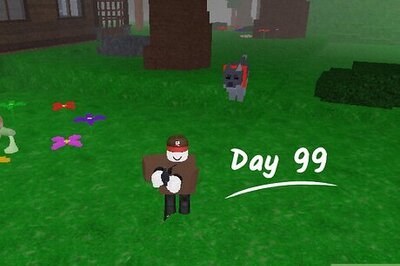


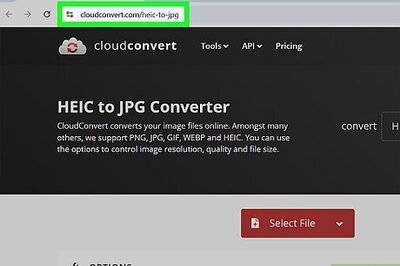
Comments
0 comment